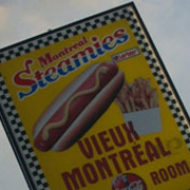I opened up my email this morning to discover a letter from Sage, to which I link at the end of this post.
The gist of it is that my author’s offprints now come as an executable file. I can print forever, off this computer. I can email the file to 25 people and they can print forever off the one computer on which they receive it. I clicked the link, and the good people at Sage even had the wisdom to create a Macintosh version of the program.
Now, presumably, I also need to download the PC version in case someone to whom I’m mailing the program has a PC.
Also, it is unclear what will happen if someday I decide to use another computer as my main computer. Will I have the same permissions? Different ones?
But the punchline came when I tried to run the program. I get a dialogue box asking if I will allow it to access “Assistive Devices.” I sure as hell will not allow it to access assistive devices! For the following reasons:
–>I don’t know what “assistive devices” are on a Macintosh.
–>I suspect that the program has no intention of assisting me in any way.
–>I have no assurances from Sage that this program’s copy protection scheme–which I’ve never heard of before today–won’t bore itself into the core of my operating systems and mess up my computer in ways I cannot yet conceive. In the digital audio recording world, users have been dealing with bad and often harmful copy protection schemes for years–ironically more harmful than the kinds of bugs that would routinely come with kracked software–and so I am naturally suspicious. (See reviews of software using PACE for an example of what can and does happen when companies stop trusting their users.)
–>Not only does Sage ask me to trust them, they also ask me to send what could be very buggy software to friends and colleagues.
–>I clicked on Sage’s FAQ for authors to find out if I had any assurances from them and there is no discussion of the copy protection scheme.
So, in short, my article on the mp3 — the file format that still sits at the center of the file-sharing debate — is so thoroughly copy-protected that I am afraid to even look at it, at least in the format the press wants me to use.
Thankfully, I have another option: my university library.
The program goes in the trash, I download the regular .pdf file of the article (which I will happily email you as an offprint) and everything appears fine. I printed it out, so I can now photocopy it to my heart’s delight and send it out that way, as well.
This seems like a huge breach of trust on Sage’s part. I would like to say that I will never publish with them again. The truth is that I’ve got a piece in the works that I’d really like to send to Television and New Media. and so I may, in fact, publish again with Sage. But open access is looking better and better.
The email from Sage is reproduced in full here, as a .pdf file.
